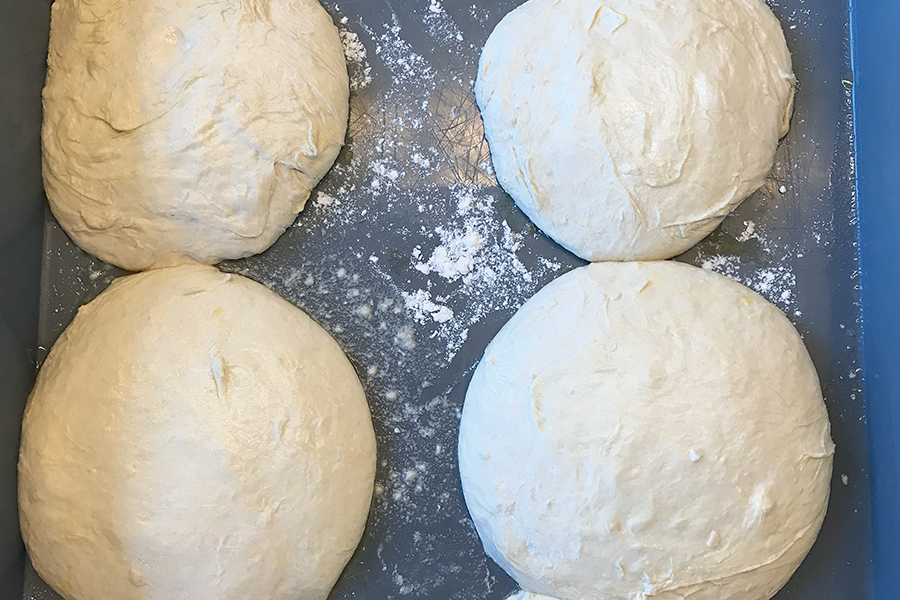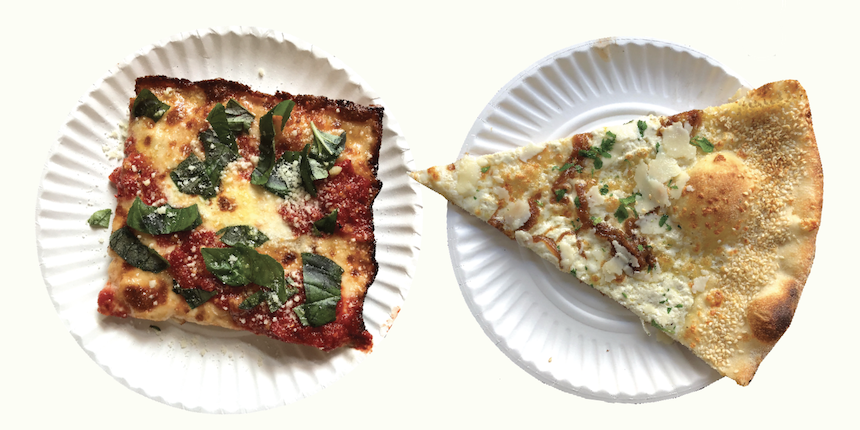Knead to Know: Warm-ups/Cool Downs
For those that know me, pizza is life but sports are LIFE. I started playing various sports as a kid and have continued an active lifestyle into adulthood. I mean, you have to with all the pizza! The first thing coaches ingrain in you are warm-ups and cool downs. They might not harp on them like they do technique or other elements, but it is the first and last thing you do in every practice or session no matter what the activity of the day is. For the body, warm-ups are essential to prime the body for any major activity and cool downs help with recovery and both build endurance. Now, you might be thinking how in the heck or why is she talking about sports when this is about all things pizza and dough. Well, heat and cold play as crucial a role in great tasting dough as it does in performing in peak athletics. You wouldn’t want to sprint the first mile in a marathon without properly warming up and you also wouldn’t want to make a dough and then cook it right out of the mixer. Both require time and proper temperature control.

Laura Meyer, owner, Pizzeria da Laura, Berkley, CA
Fermentation requires a few ingredients, but the major one is yeast. The strain of yeast we are most preoccupied with, Saccharomyces cerevisiae, is most active between 85 and 95 F. Anything above 110 degrees and it will begin to die and the clock starts ticking in regards to longevity. Before I even mix a batch of dough, I am thinking about temperature. This is the one factor that will play a crucial role in not just proper fermentation but also flavor development. During fermentation many things are happening at once. Yeasts are looking for simple sugars to eat so they can reproduce, and different bacteria are also looking for food so that they can also survive. There are many bacteria fighting it out for dominance, especially within sourdough, but Lactobacillus is the primary one we analyze because this bacterium produces lactic acid which is where we get a lot of the flavor in our dough, aside from salt. While both yeast and bacteria are looking to survive, enzymes are breaking down complex sugars into simple sugars providing more food for yeast.
The yeast produces alcohol and Lactobacillus bacteria create lactic acid. As long as there is a food source available, they will continue to consume and produce, but when the dough ages to a point where there is too much alcohol, a different bacteria known as Acetobacter comes in and feeds on the excess of alcohol and then produces acetic acid which is more
astringent like white vinegar.

All of this is happening within our dough as soon as we mix a batch of dough. The goal is to balance the length of fermentation so that we create maximum flavor while still ensuring usability. Right now, everyone loves to talk about how hydrated their dough is and how old it is. Well, there’s a tightrope we walk when it comes to this. Yeast is most active in warm environments, but you do not want them to be so active that they consume all of their food source before the bacteria is able to produce the acids needed for flavor. The clock starts as soon as you begin mixing.
For those who live in warm environments, temperatures can be a blessing and a curse. In Italy there isn’t as much refrigeration space as here in the U.S. This means a lot of pizzerias are fermenting their dough in ambient warm environments. The key to this is control. If the day is warmer than usual, ice-cold water in the batch will help slow down yeast activity. As well, decreasing the total amount of added yeast in the dough will ensure it ferments properly at the warmer ambient temperature. If you do not compensate the amount of yeast when fermenting in warm temps, your dough will most likely not reach the length of maturation time you are aiming for, resulting in less flavor. If you think about it, less yeast in a batch means a larger food source available. If there’s too much yeast, that means there’s less of a food source available resulting in your dough dying sooner.
Cold fermentation on the other hand is a blessing if used correctly. In the U.S. we are always trying to maximize refrigeration space. For dough the use of cold fermentation can be a tool to increase flavor as well as make sure your dough ferments on your timetable. There are so many moving parts to restaurants that your dough schedule needs to be as streamlined as much as possible. For those using solely warm fermentation, this requires a lot more attention to detail. If the room becomes too hot, you will be moving your dough around. If the room is too cool, then you are chasing the warm spots. The use of refrigerators gives you more time if you have it. When yeast is in a cold environment, activity slows down. In a refrigerator held between
35 and 40 F, yeast slows to a crawl. When yeast activity is slowed down, bacteria has a chance to produce the acids needed for flavor. When someone says they are using five-day-old dough, they are most likely using a refrigerator.
Neither solely using warm or cold fermentation is better than the other. Both are great and useful when it comes to making tasty dough but understanding the effects of both is crucial. We are always looking for a way to control our product and make it as consistent as possible. Knowing the role temperature plays in the lifespan of your dough is essential. As soon as you understand the balance of time and temperature, the real fun begins.
Laura Meyer is the owner of Pizzeria da Laura in Berkeley, CA.
>> Explore answers to more common pizza dough questions in Troubleshooting your Pizza Dough: What’s wrong with my pizza dough? <<








